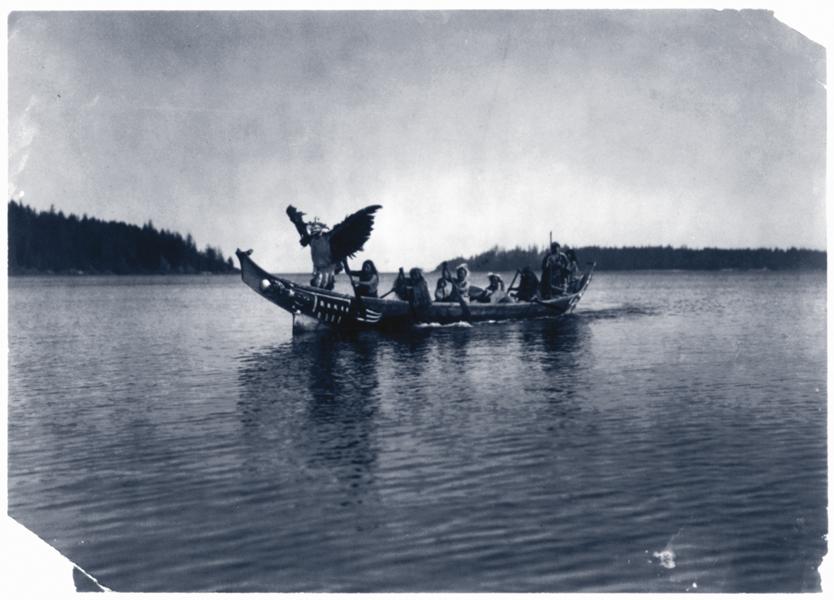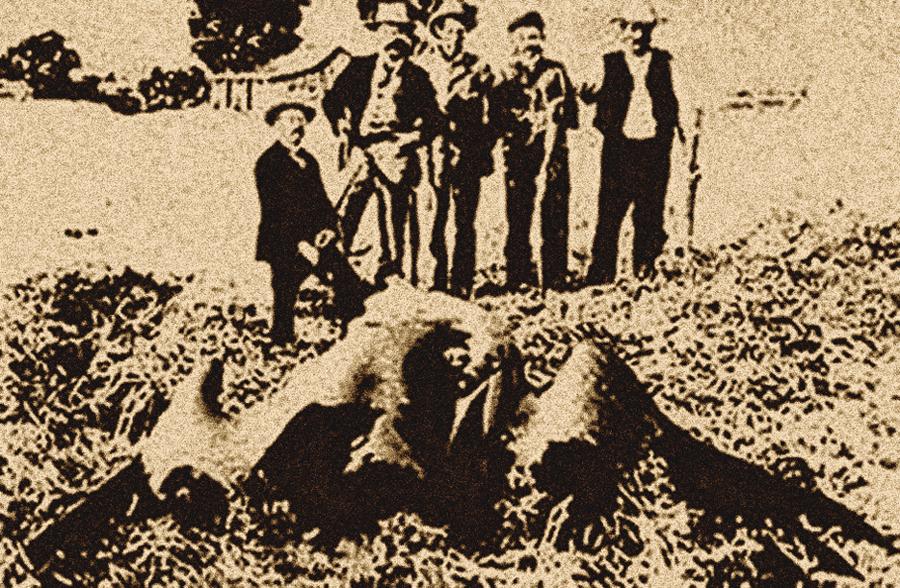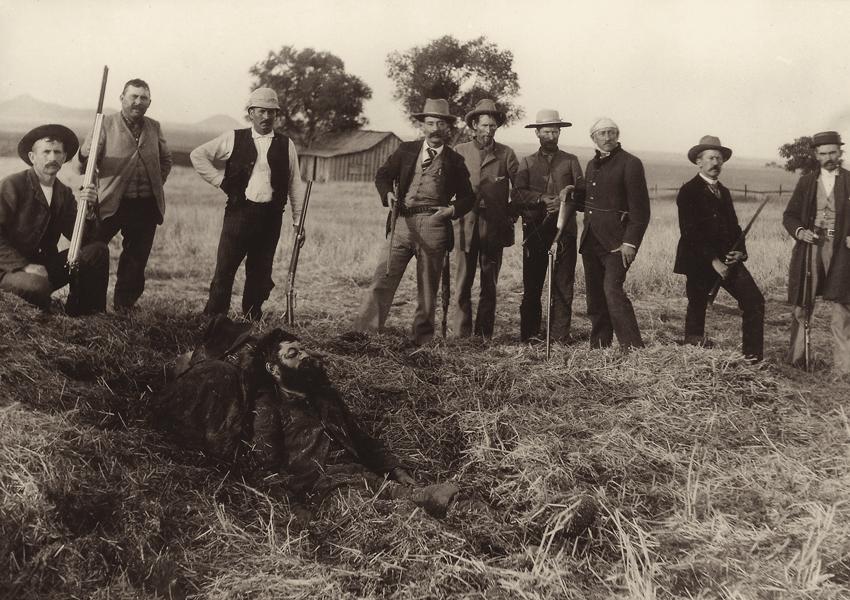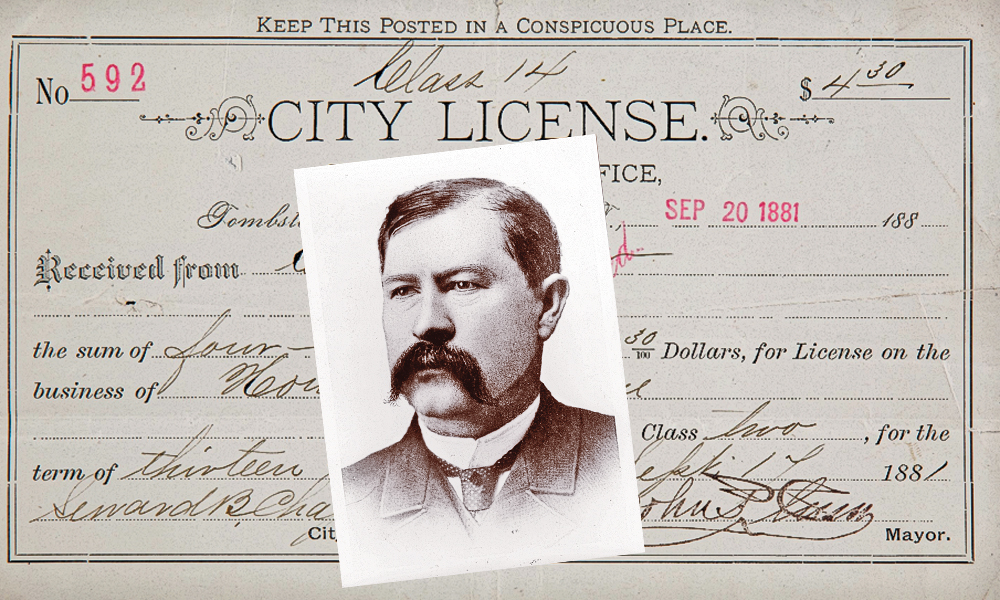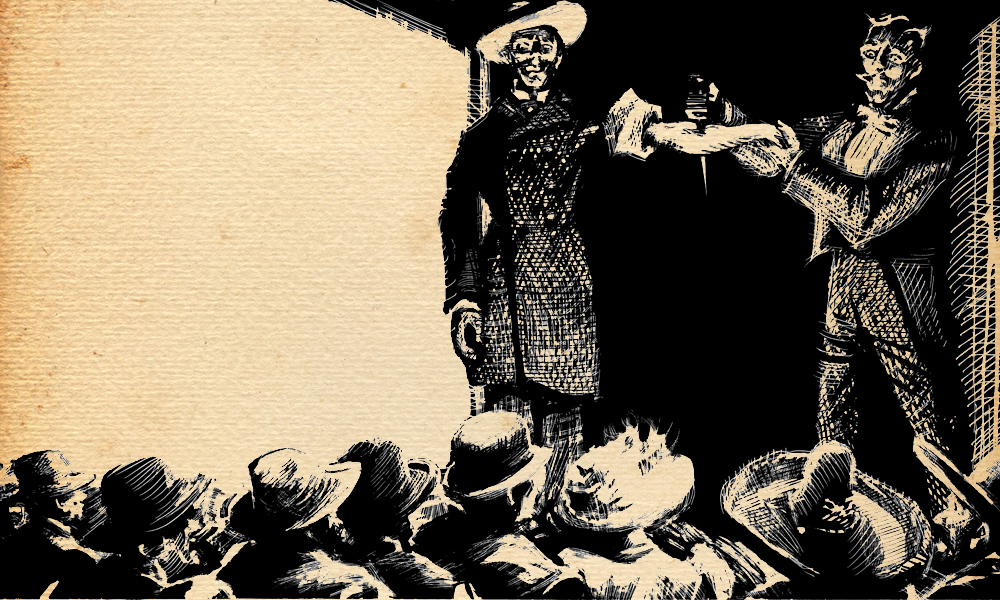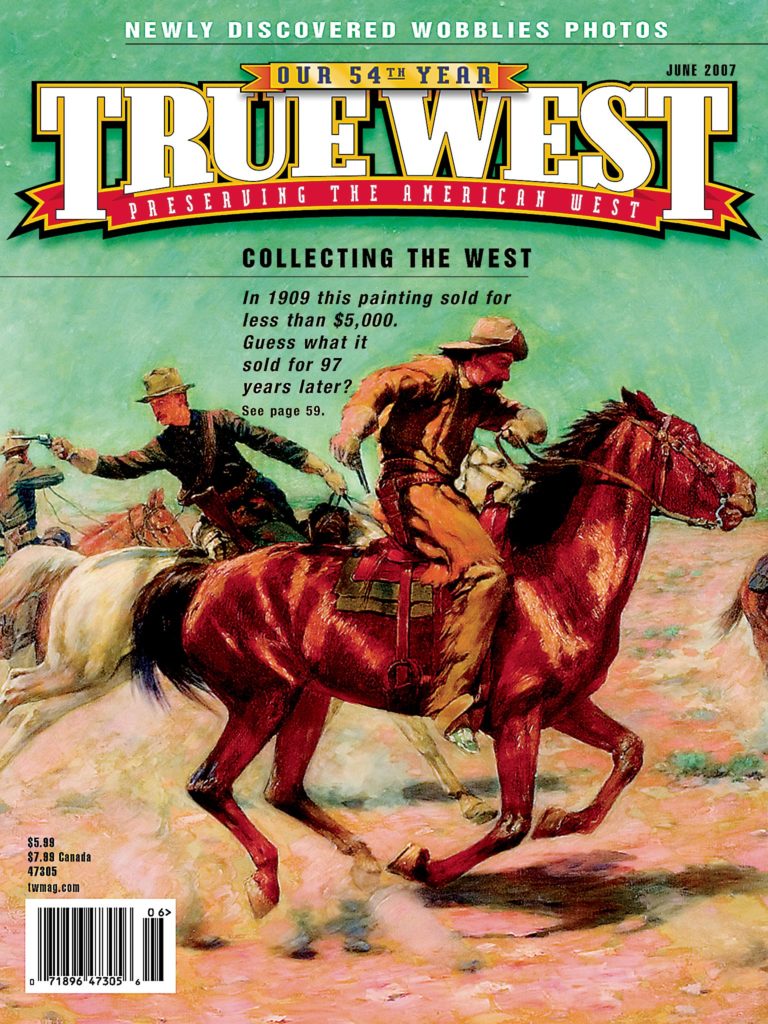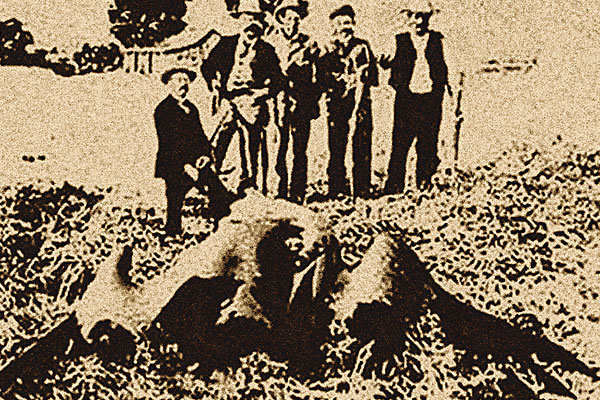
One of the West’s most fascinating cold cases involves a flying monster, a dying town and a disappearing photograph.
For decades, people have been trying to solve the mystery of the “Thunderbird photograph.”
True West doesn’t pretend to have all the answers, but we have some, and they give a pretty clear picture of what happened to the picture that has been the source of such angst and wonderment all these years.
Let’s just say that it is a mystery to us that the Thunderbird photograph is still a mystery.
The Horse’s Mouth
The story began when The Tombstone Epitaph published this news article on April 26, 1890:
A winged monster, resembling a huge alligator with an extremely elongated tail and an immense pair of wings, was found on the desert between the Whetstone and Huachuca mountains last Sunday by two ranchers who were returning home from the Huachucas. The creature was evidently greatly exhausted by a long flight and when discovered was able to fly but a short distance at a time.
After the first shock of wild amazement had passed the two men, who were on horseback and armed with Winchester rifles, regained sufficient courage to pursue the monster and after an exciting chase of several miles succeeded in getting near enough to open fire with their rifles and wounding it.
The creature then turned on the men, but owing to its exhausted condition they were able to keep out of its way and after a few well directed shots the monster partly rolled over and remained motionless. The men cautiously approached, their horses snorting with terror, and found that the creature was dead.
They then proceeded to make an examination and found that it measured about ninety-two feet in length and the greatest diameter was about fifty inches. The monster had only two feet, these being situated a short distance in front of where the wings were joined to the body. The head, as near as they could judge, was about eight feet long, the jaws being thickly set with strong, sharp teeth. Its eyes were as large as a dinner plate and protruded about halfway from the head.
They had some difficulty in measuring the wings as they were partly folded under the body, but finally got one straightened out sufficiently to get a measurement of seventy-eight feet, making the total length from tip to tip about 160 feet. The wings were composed of a thick and nearly transparent membrane and were devoid of feathers or hair, as was the entire body. The skin of the body was comparatively smooth and easily penetrated by a bullet.
The men cut off a small portion of the tip of one wing and took it home with them. Late last night one of them arrived in this city for supplies and to make the necessary preparations to skin the creature, when the hide will be sent east for examination by the eminent scientists of the day.
The finder returned early this morning accompanied by several prominent men who will endeavor to bring the strange creature to this city before it is mutilated.
Wow, what a story. What an adventure. And what a possible boon to struggling Tombstone, the once thriving mining community that had become famous—or infamous—for the 1881 Gunfight Behind the O.K. Corral.
Tombstone had fallen on bad days by 1890 and was a town in trouble. An earthquake had shifted the earth’s plates and flooded the silver mines that had once brought so much wealth. Several attempts to pump out the water and revive the mining interests all failed. While there were still several bars in town, the population was declining and business was way off. Everyone feared the town’s heyday was past and would never come back.
But Tombstone still had two daily newspapers, as did nearby Tucson. It doesn’t take much imagination to realize a flying monster would be big news, both to curious tourists and studious scientists. And any Chamber of Commerce guy worth his salt would have instantly seen the economic possibility in such a creature—this was better than a circus coming to town. It would attract visitors, certainly from Tucson and Bisbee, and folks might even come from Prescott or Phoenix to get a gander. You can make a lot of money on tourists—they need a place to stay and three squares a day, and they usually like to take home a trinket or two. So what if your tourist attraction is a freak show, money is money.
But alas, that’s not what happened. There was no Chamber of Commerce effort to exploit this amazing creature; there were no scientists rushing to the town in stagecoaches to examine this prehistoric-sounding pterodactyl. There wasn’t even a mention in the competing Tombstone daily, The Nugget.
In fact, and this is most telling of all, there never was another story in the Tombstone Epitaph about this fantastic discovery. Troy Taylor, founder of the American Ghost Society, probably nails it when he notes the article “gave all of the appearances of the tall tales that were often written in the Western newspapers of the era.”
And it’s important to know this: There was no photograph printed in The Tombstone Epitaph of this flying giant. From reading the one and only article ever printed in Tombstone about this incident, it is clear that no picture had yet been taken—if one ever was; if there ever was a giant bird to photograph.
All of this would end there except for the marvels of Western lore. Horace Bell first reminded everybody of the story in his 1930 book On the Old West Coast. With his reprint of the Epitaph story (slightly different from the original), Bell never mentioned a photograph. Nor did he claim one existed.
It wasn’t until 1963—33 years after Bell’s book and 73 years after the ranchers supposedly killed big bird—that the notion of a photograph was advanced by a writer named Jack Pearl in Saga magazine. He not only claimed there was a photograph of the creature, but declared it had been published in The Tombstone Epitaph in 1886. He stated the picture showed the bird “nailed to the wall. The newspaper said that he had been shot by two prospectors and hauled into town by wagon. Lined up in front of the bird were six grown men with their arms outstretched, fingertip to fingertip. The creature measured about 36 feet from wingtip to wingtip.”
Another writer, H.M. Cranmer, contended in Fate magazine in the fall of 1963 that the picture had been published in newspapers all over the country. Ivan T. Sanderson, considered an eminent researcher in the study of strange phenomena, claimed to not only seeing the photo, but once having a photocopy he unfortunately loaned out and never got back. Someone later came forward and remembered seeing Sanderson display the photo on Canadian television, although no copies of the show have been found.
In the late 1990s, the search for the Thunderbird photo had become an obsession. Mark Chorvinsky’s Strange magazine invited a discussion on the topic for several issues and found readers who believed they had seen the photo in everything from men’s magazines to Time-Life books.
Taylor tells of his own fascination in his book Out Past the Campfire Light: “The story of the ‘Tombstone Thunderbird’ has intrigued me as long as I can remember. Even as a child I remember reading the story and being amazed. How, I asked myself, could what seemed to be a prehistoric creature like a pterodactyl be shot by cowboys in the 1800s? Such a thing seemed impossible but evidence existed in the form of many stories and references to the event and of course, existed in the form of a photograph. That was the really exciting part—that photograph! I still remember what it looked like today. Or do I?”
Just the Facts, Please
Let’s go back to how this “Thunderbird Photograph” story got started. It was 1963 and Jack Pearl’s article in what some call the “sensationalistic men’s magazine” Saga. He claimed the Epitaph printed the photo in 1886. He was wrong on all counts.
The Tombstone Epitaph staff members went back in the late 1960s, searching for the photo so it could solve this Old West mystery. They couldn’t find one. One wasn’t printed with the original article, and the paper didn’t publish a follow-up article. Plus Pearl is wrong on the year—the incident didn’t even happen until 1890.
Others searched newspapers around the country—remember, Cranmer claimed the photo had been published nationwide—and no photo was found. Amateur sleuths who were certain they’d seen the photo in a certain book went back and found the book did not contain such a picture.
Taylor himself has done considerable sleuthing and came back empty-handed. “I SWEAR that I saw it myself,” he tells True West. “It’s strange that so many people remember seeing the photo, including many very, very reliable people.”
Just last year, Cryptomundo.com published two photos and a drawing, and asked “Lost Thunderbird photo found?” None of them shows a bird pinned to the wall of a barn. One shows five men standing behind a giant bird on the ground; another shows eight Civil War soldiers around a bird at their feet; and the third is a drawing showing eight men holding a big bird upside down.
A lively response ensued on the website. “Kim” wrote she once had a book with the missing photo, but she searched the book and it isn’t there anymore. “I suspect that someone with the ability to go back in time stopped the photo from being taken,” she mused. “After that occurred, the photo disappeared from all the books and magazines it was ever in.”
“Tube” responded: “Before we indulge in Fortean space-time warps as explanations for ‘missing’ photographs I’d like to suggest that those curious about these things to research ‘false memory’ and ‘confabulation’ as likely candidates to explain this mystery.”
To that, “M. Valdemar” responded: “Tube, I entirely agree with you about false memory and confabulation. And yet, there’s some really powerful mojo at work with the thunderbird photo … my first thought was ‘Oh yeah, I’ve seen that.’ I’m willing to concede that there is no such photo; nonetheless, I find it fascinating that so many people (including me) should find the suggestions so irresistibly strong.”
Mark Hall believes the description of the photo is so vivid that it has created a “shared memory” of something that does not exist, he wrote in his book, Thunderbirds: America’s Living Legends of Giant Birds.
Think about it a second. Can’t you just see the guys, all in cowboy hats and boots, some with guns on their hips, some with mustaches, most looking grungy, standing next to an unpainted—or badly peeling—barn with a big bird nailed to the side. It’s not hard to see.
As Hall puts it: “The status of the infamous ‘Thunderbird photograph’ has remained the same for years. A lot of people think they have seen the picture. Everyone wants to see it. But no one can produce a copy.”
The bottom line seems clear: The evidence is overwhelming that this “photograph” just never existed.
Was there a Thunderbird?
It’s from Indian folklore we get the idea of giant bird-like creatures called Thunderbirds. Some believe they truly exist; others are convinced they are mythical, like the Unicorn.
We don’t know if The Tombstone Epitaph reporter had his tongue in his cheek when he reported on the killing of a Thunderbird in 1890, but we do know a Los Angeles newspaper took the report seriously. Again, thanks to Horace Bell’s book: “Commenting on the story in the Arizona paper, a Los Angeles paper in May, 1890, said: ‘Such a bird, reptile or monster was seen about three years ago by three Mexican rancheros living near Elizabeth Lake.”
Bell reported “this flying amphibious monster was seen several times from 1881 to 1886” in the Elizabeth Lake area of California. “But not long thereafter it was seen emerging and flying away eastward. Since then it has never been seen in its native valley because it was found and killed eight hundred miles from Lake Elizabeth, as is proved by the … article that appeared in the Epitaph, Tombstone, Arizona.”
Bell wasn’t the first, nor would he be the last, to report on thunderbirds as real creatures.
So maybe there really was a giant bird in Arizona Territory at the end of the 19th century, and maybe two ranchers really did track it down and shoot it, and maybe they did come into town and get some “prominent” men to go with them to bring it back.
But whatever happened next was so unspectacular, so uninteresting and so unremarkable that nobody spoke of it again. Would that have been the response if there really had been a dead dinosaur-like bird outside of town? Hardly.
So you’re left thinking the story of the Tombstone Thunderbird was the fantasy of a bored reporter on a spring day when nothing else was going on in that down-and-out town.
Even knowing all this, Troy Taylor hasn’t called it a day on this Old West cold case. “Are thunderbirds and mysterious flying creatures actually real?” he asks in his book. “Such creatures remain a mystery but one thing is sure, the sightings have continued over the years…. So keep that in mind the next time that you are standing in an open field and a large, dark shadow suddenly fills the sky overhead. Was that just a cloud passing in front of the sun, or something else?”
Nor has Taylor thrown in the towel on the “missing” Thunderbird photo. “What if the photo does exist and it’s out there, just waiting to be discovered in some dusty garage, overflowing file cabinet or musty basement,” he writes. “I, for one, haven’t given up quite yet—and I have a feeling that I am not the only one who is still out there looking.”
You know he’s right about that.
Photo Gallery
– Courtesy Library of Congress –
– Courtesy California State Library –


